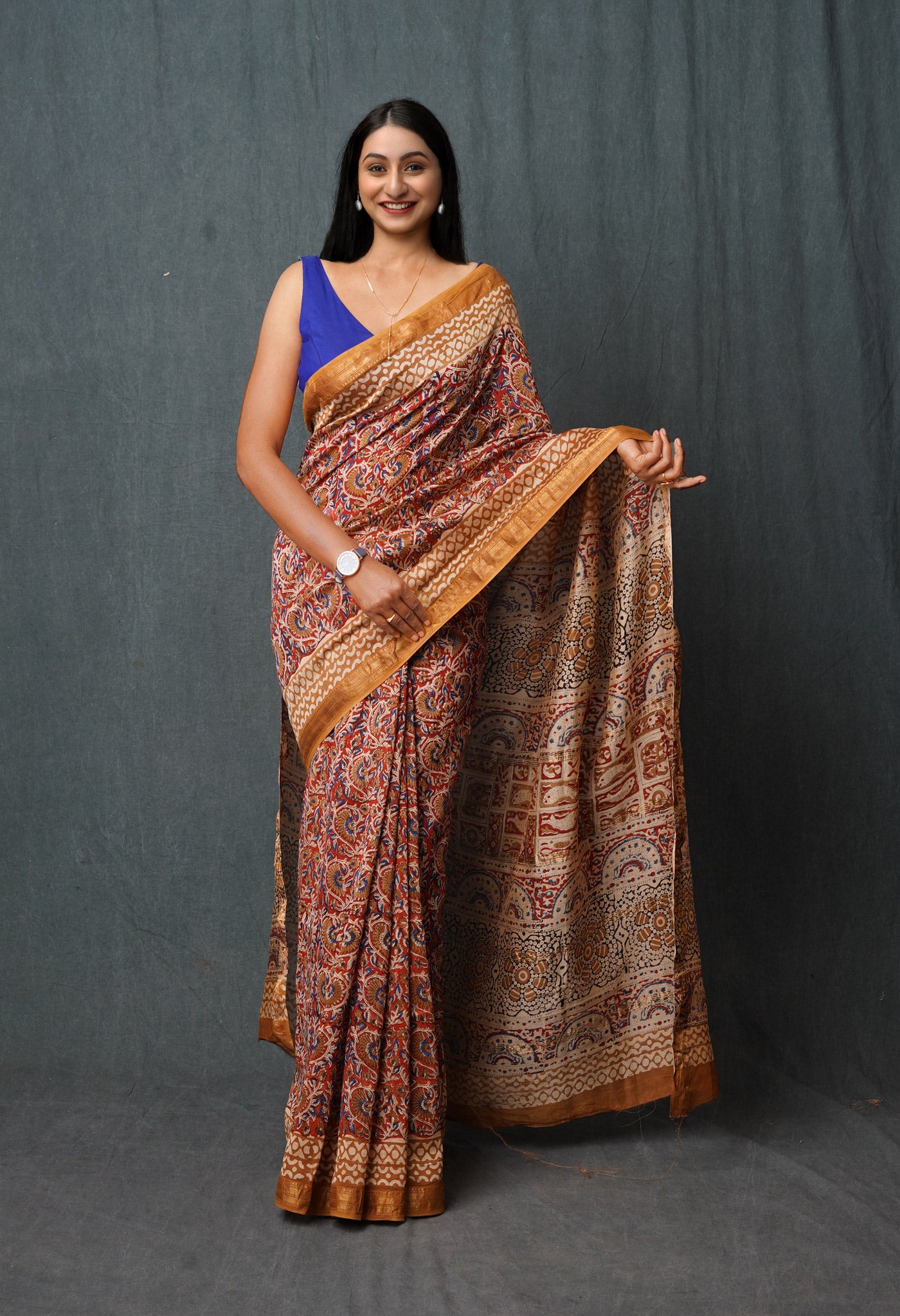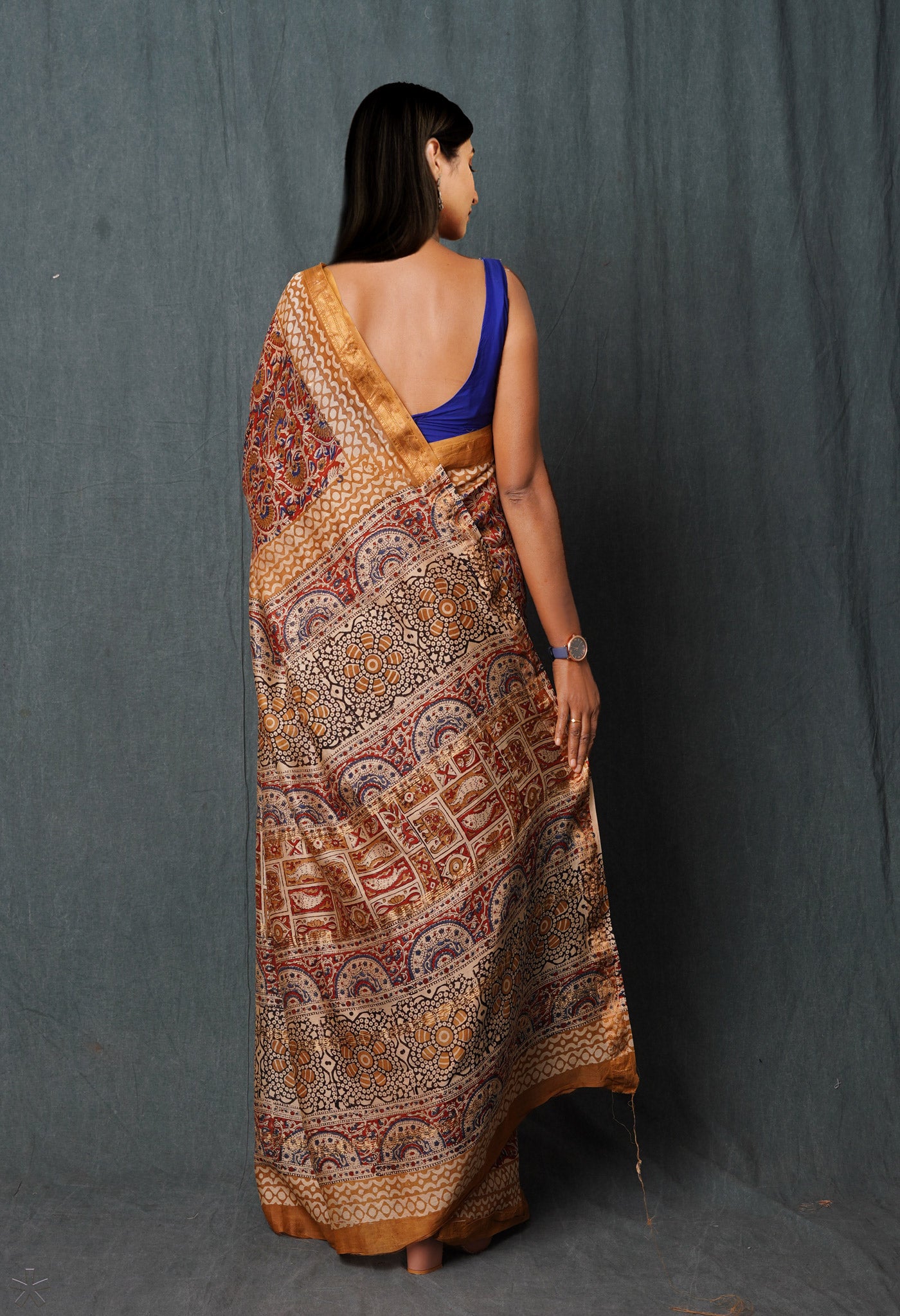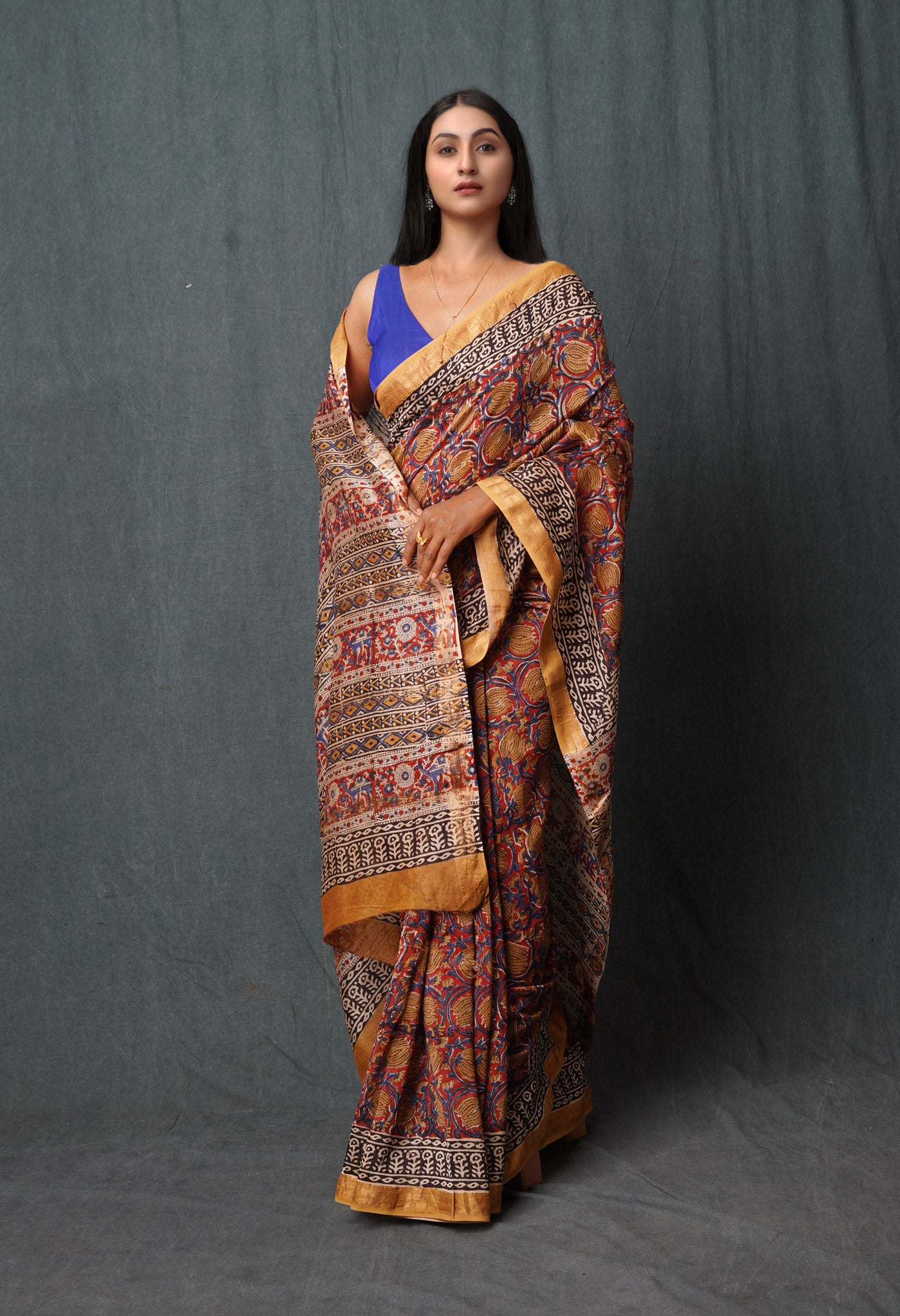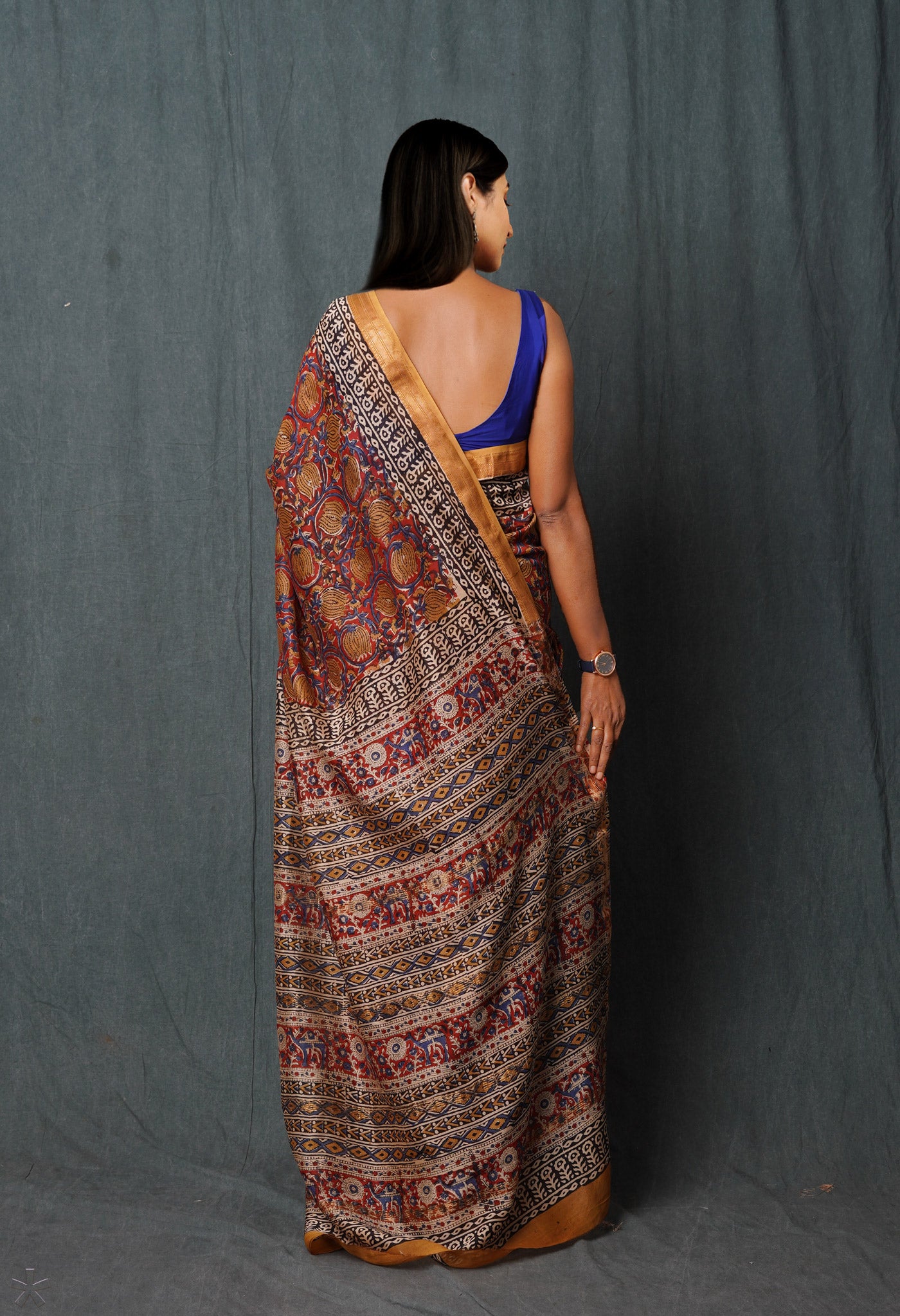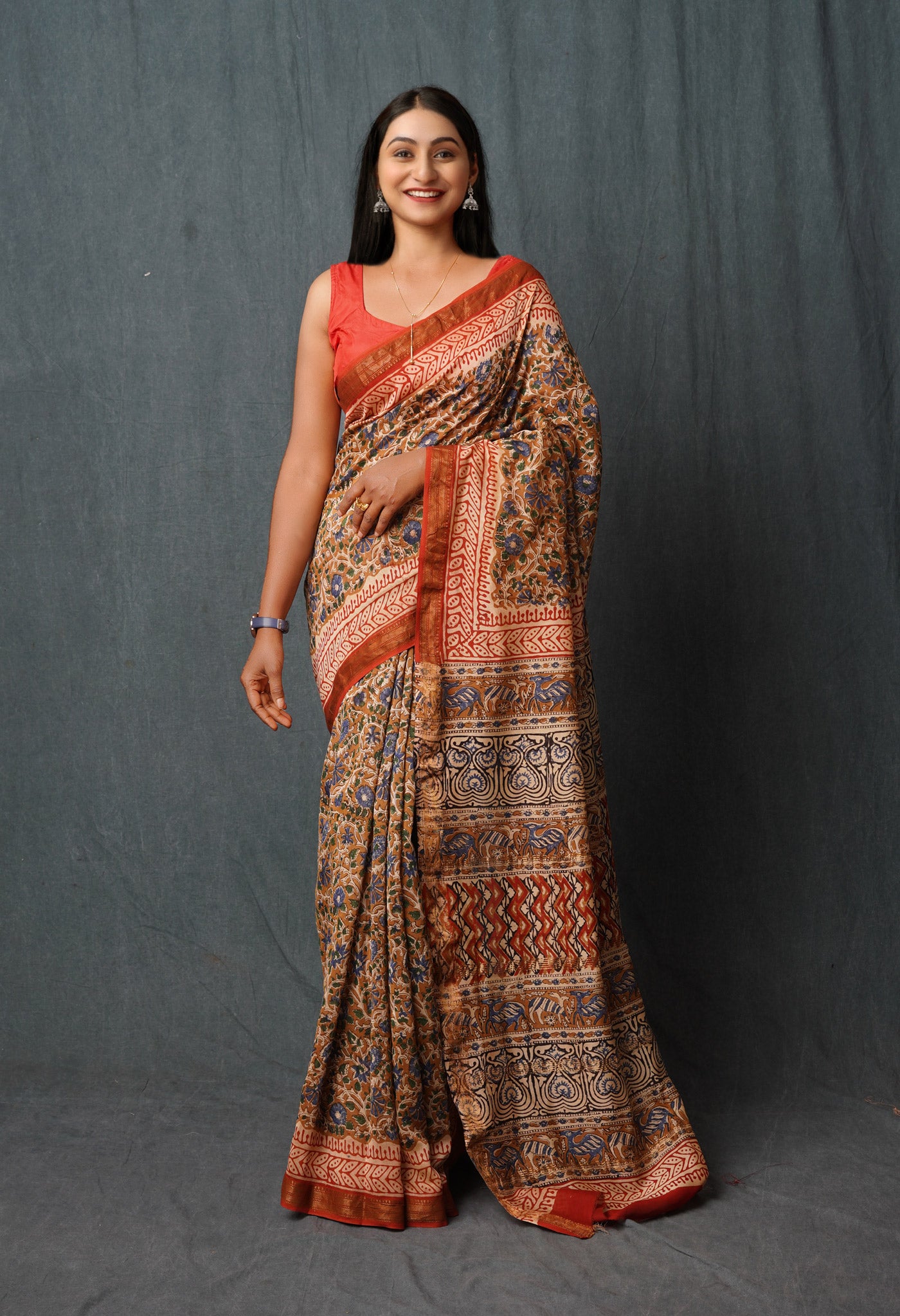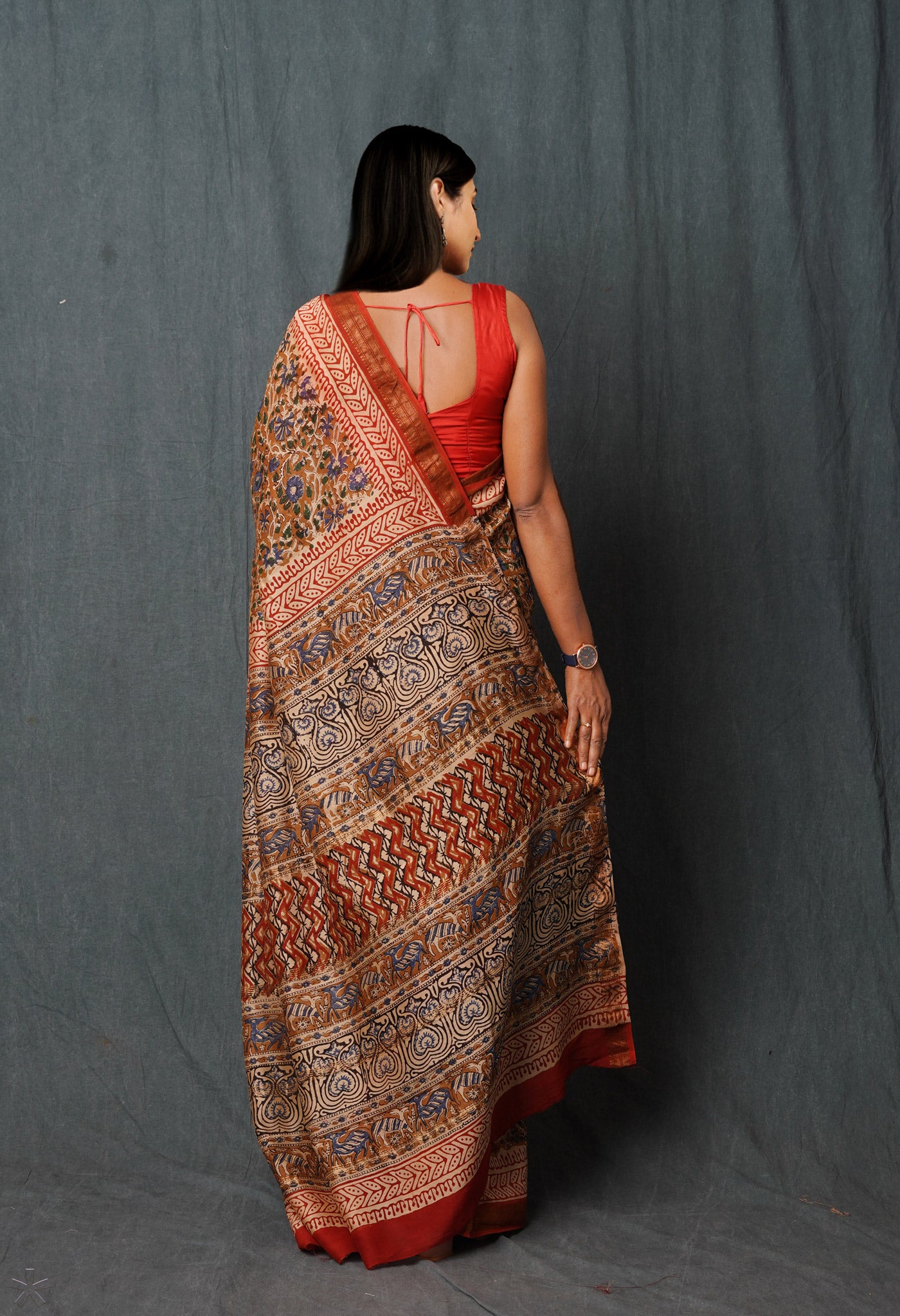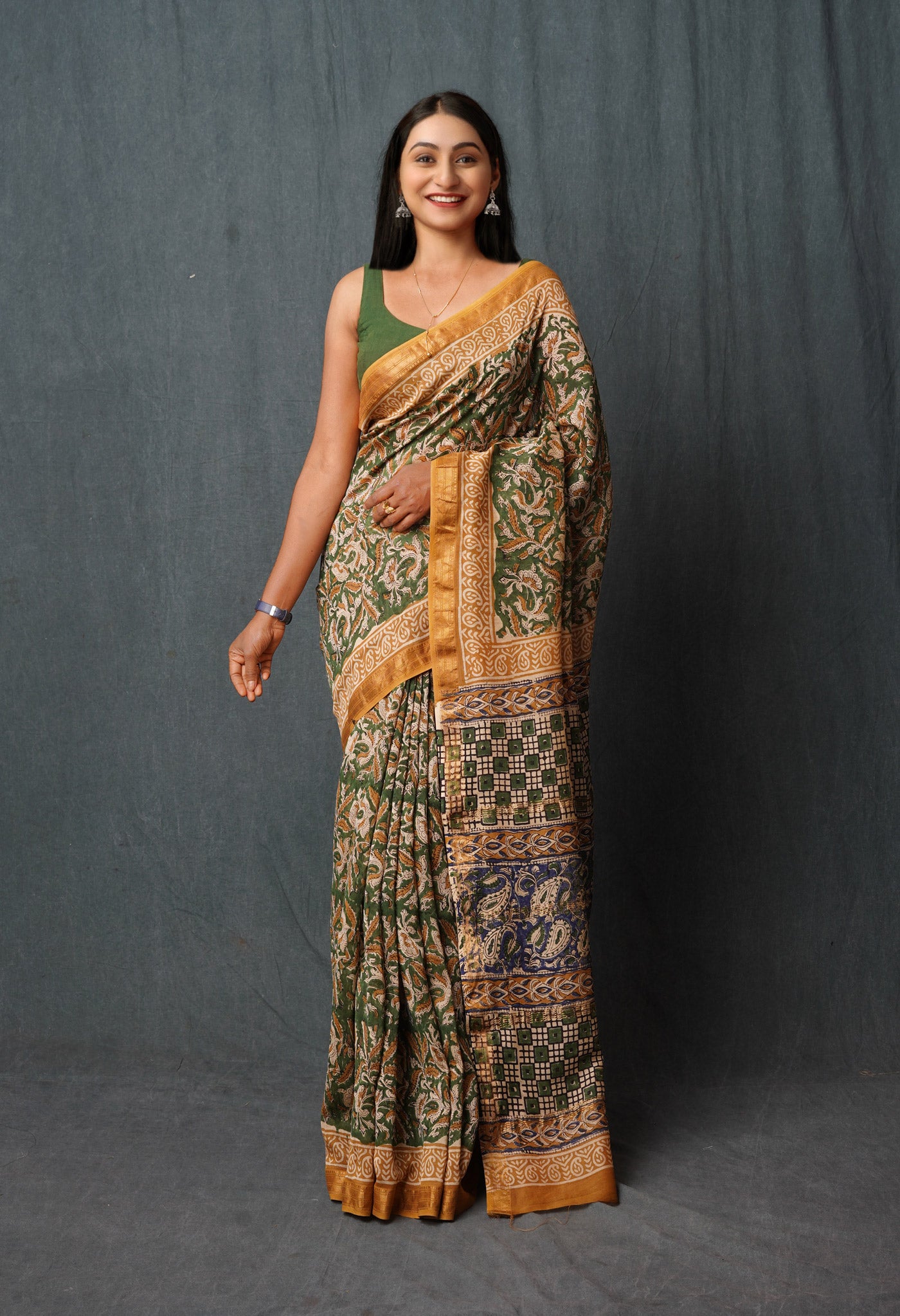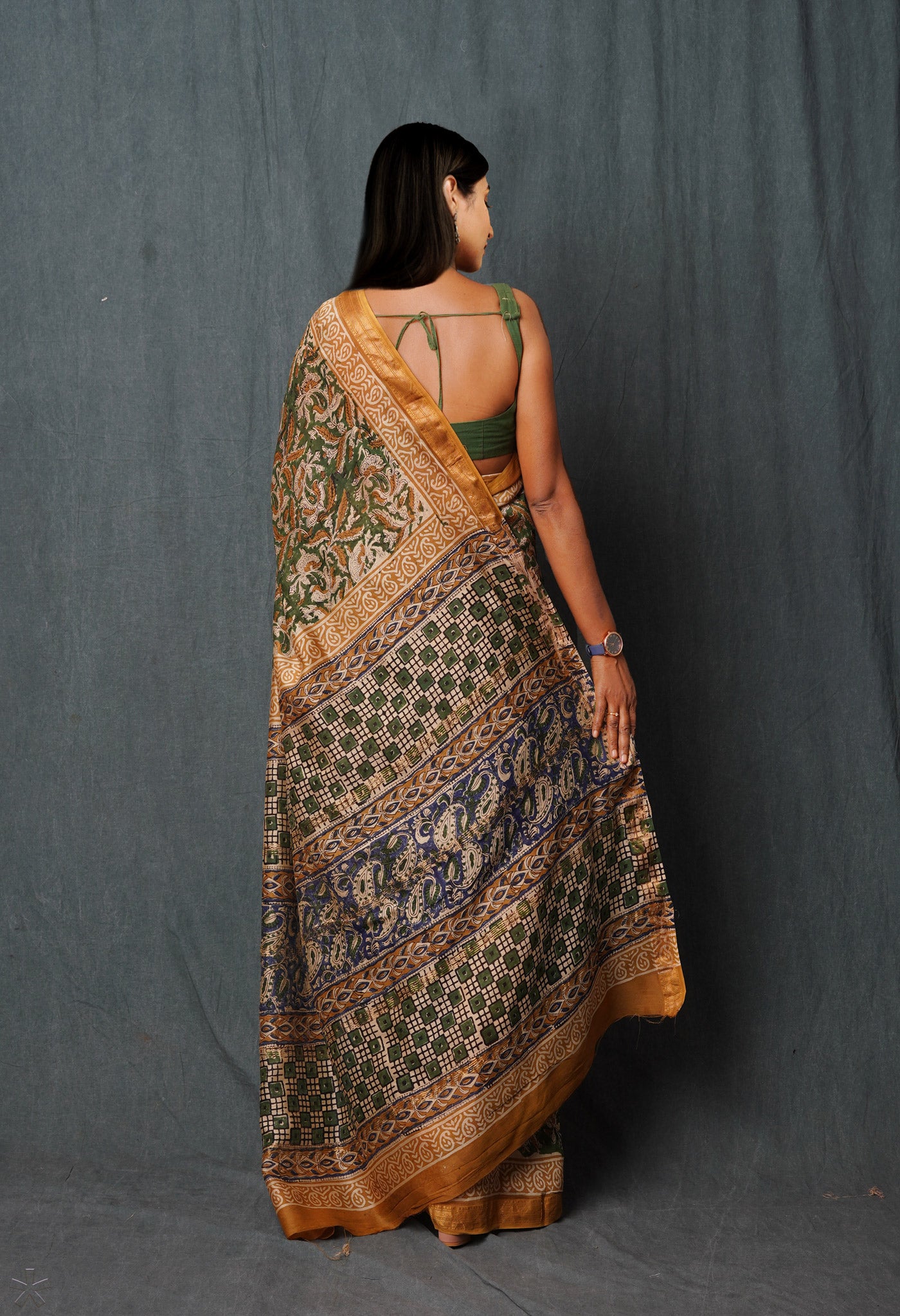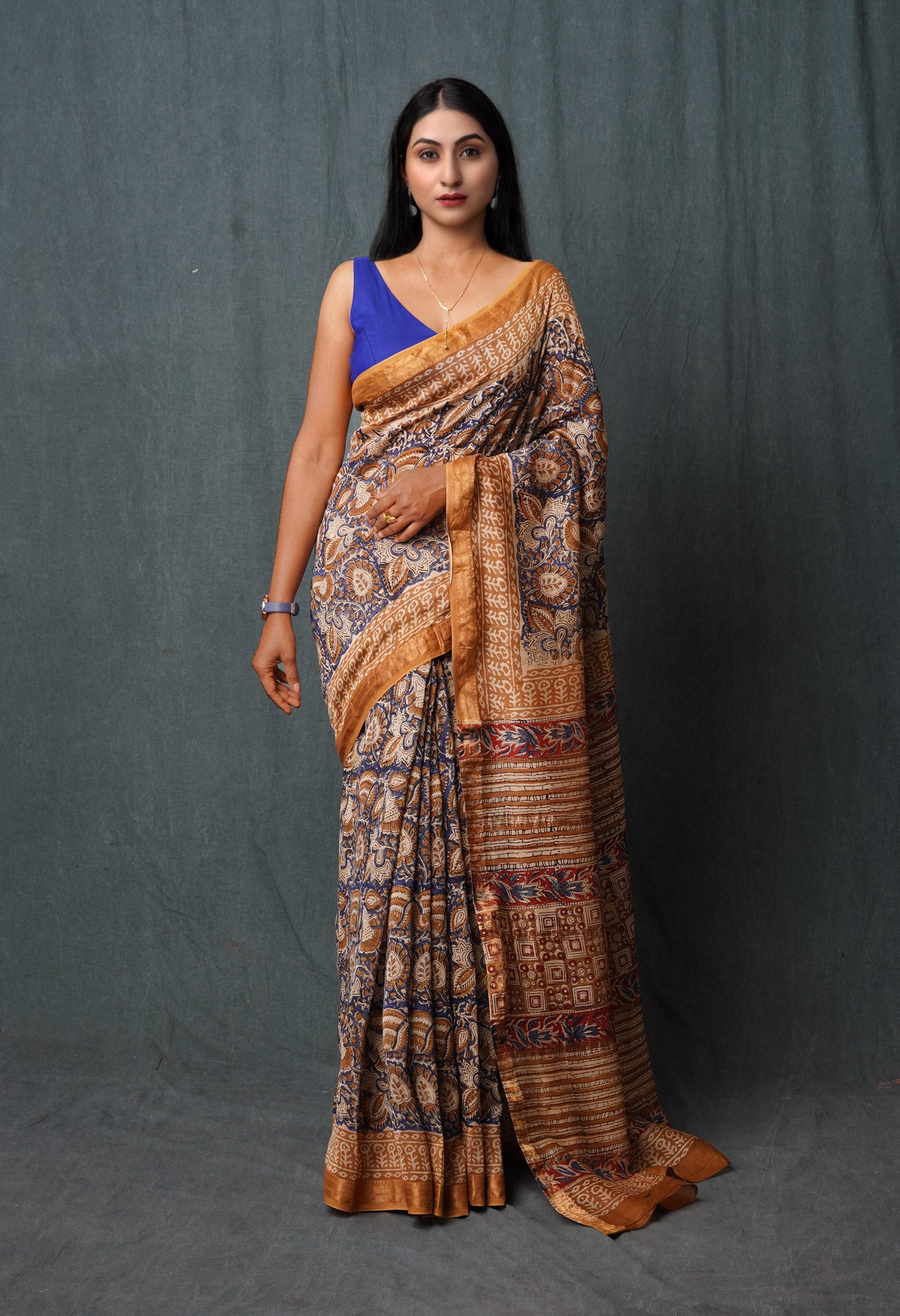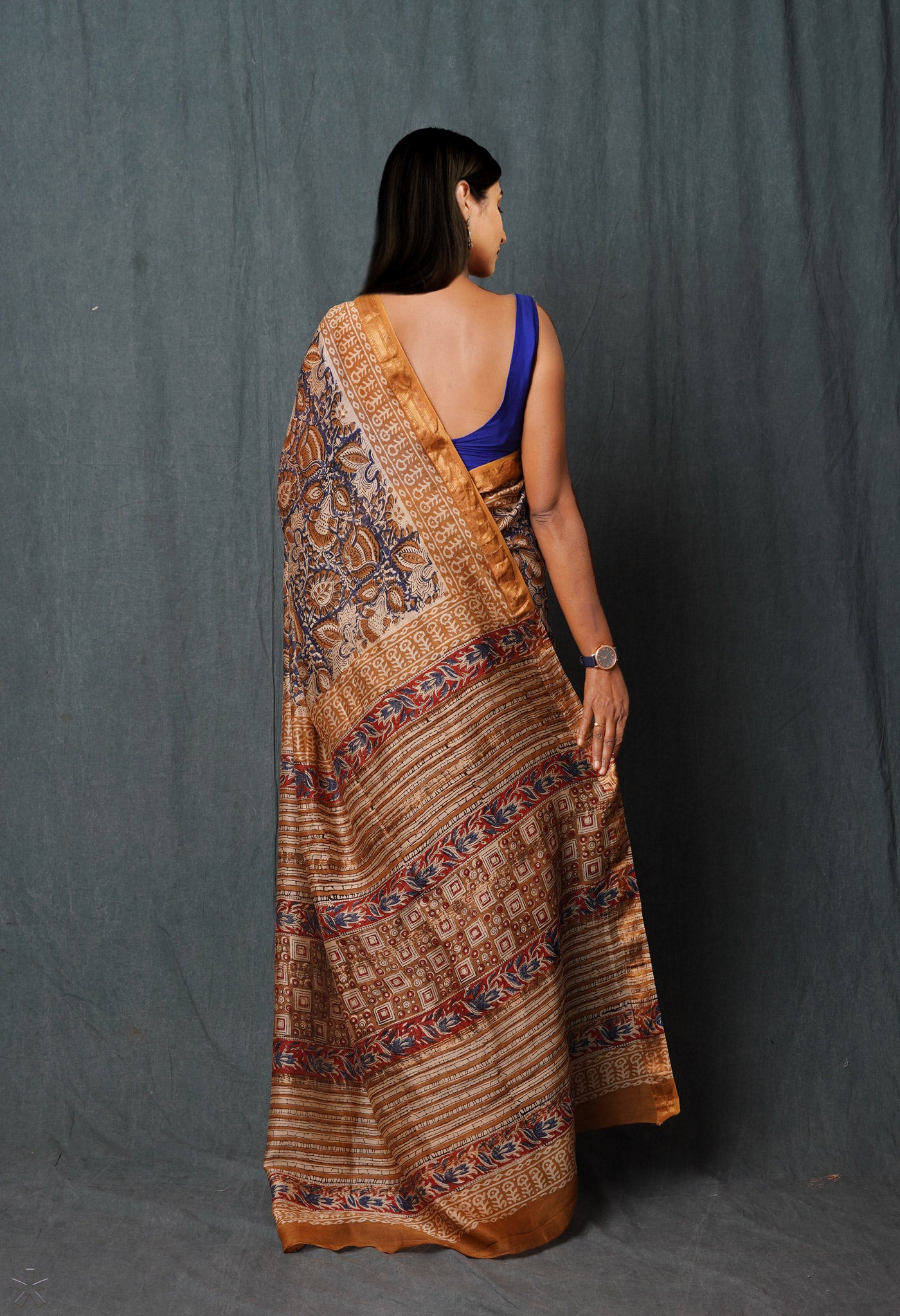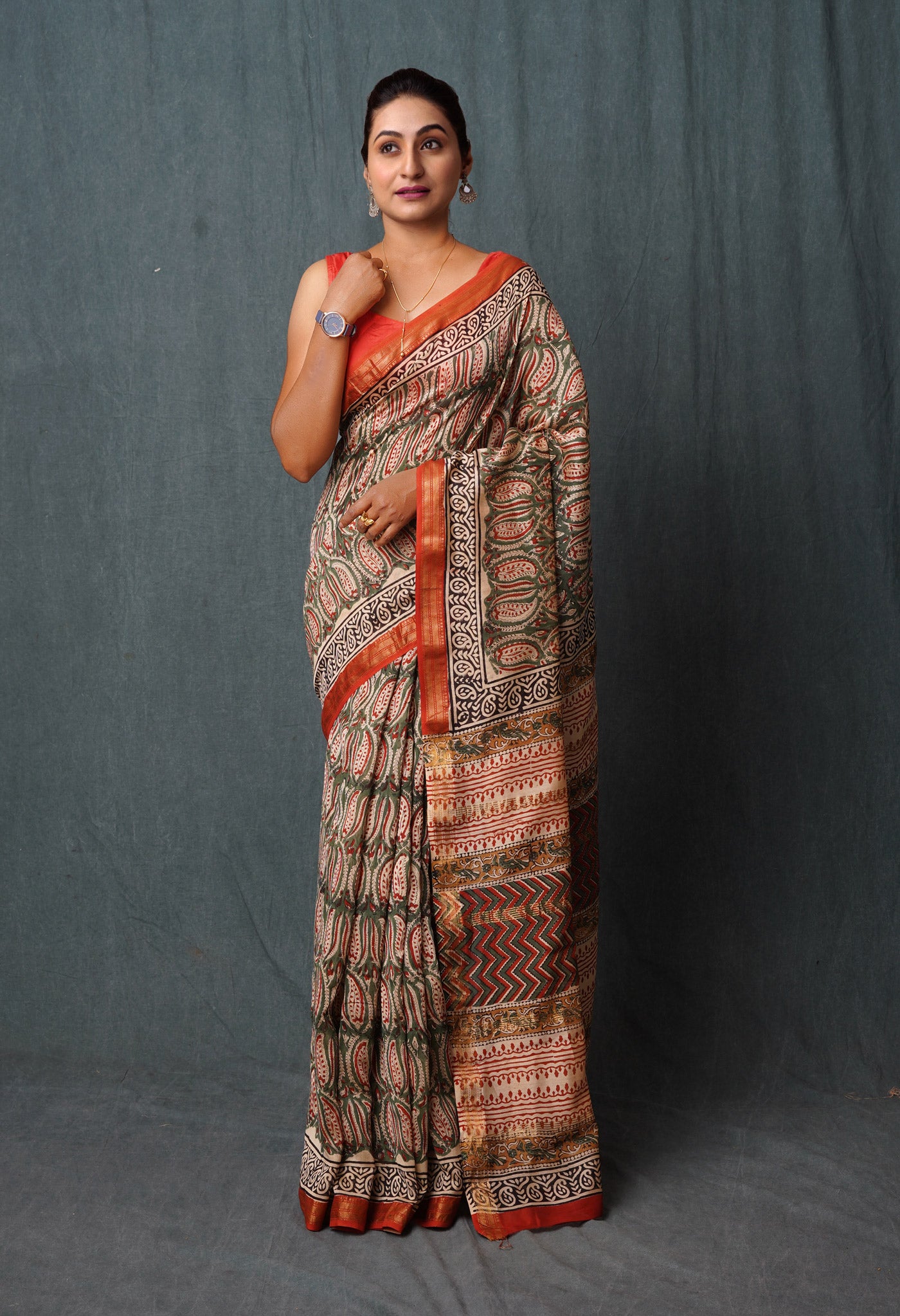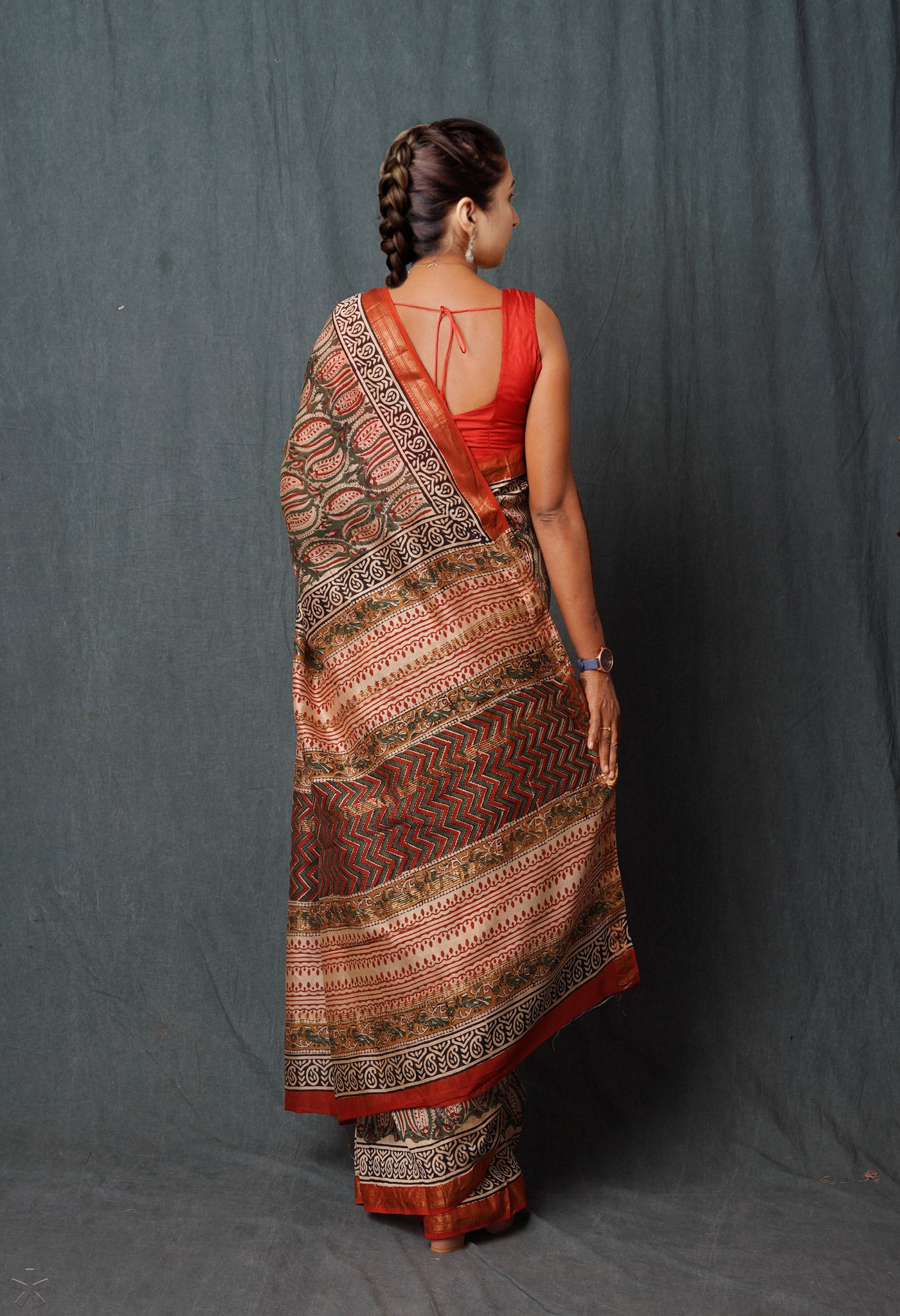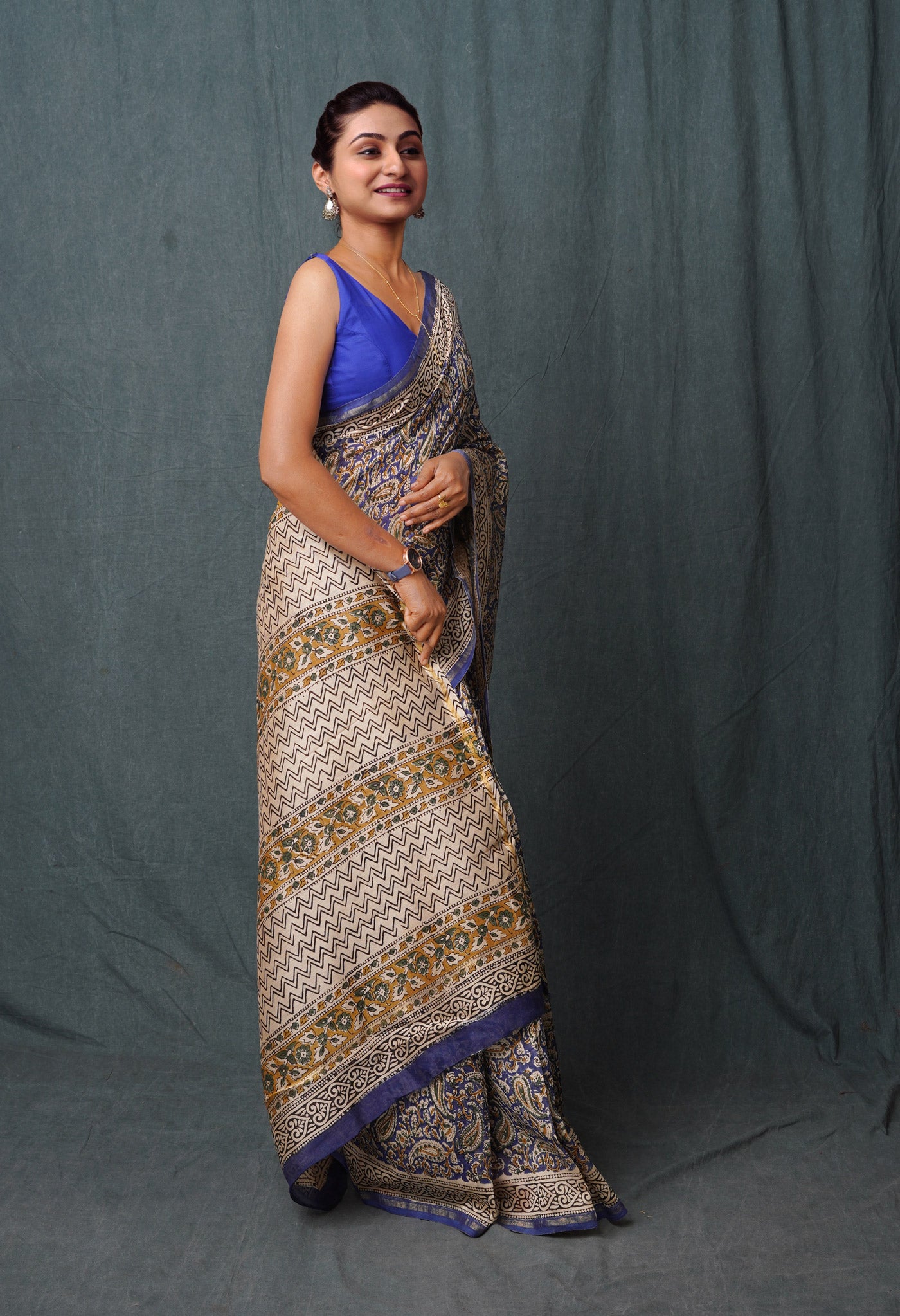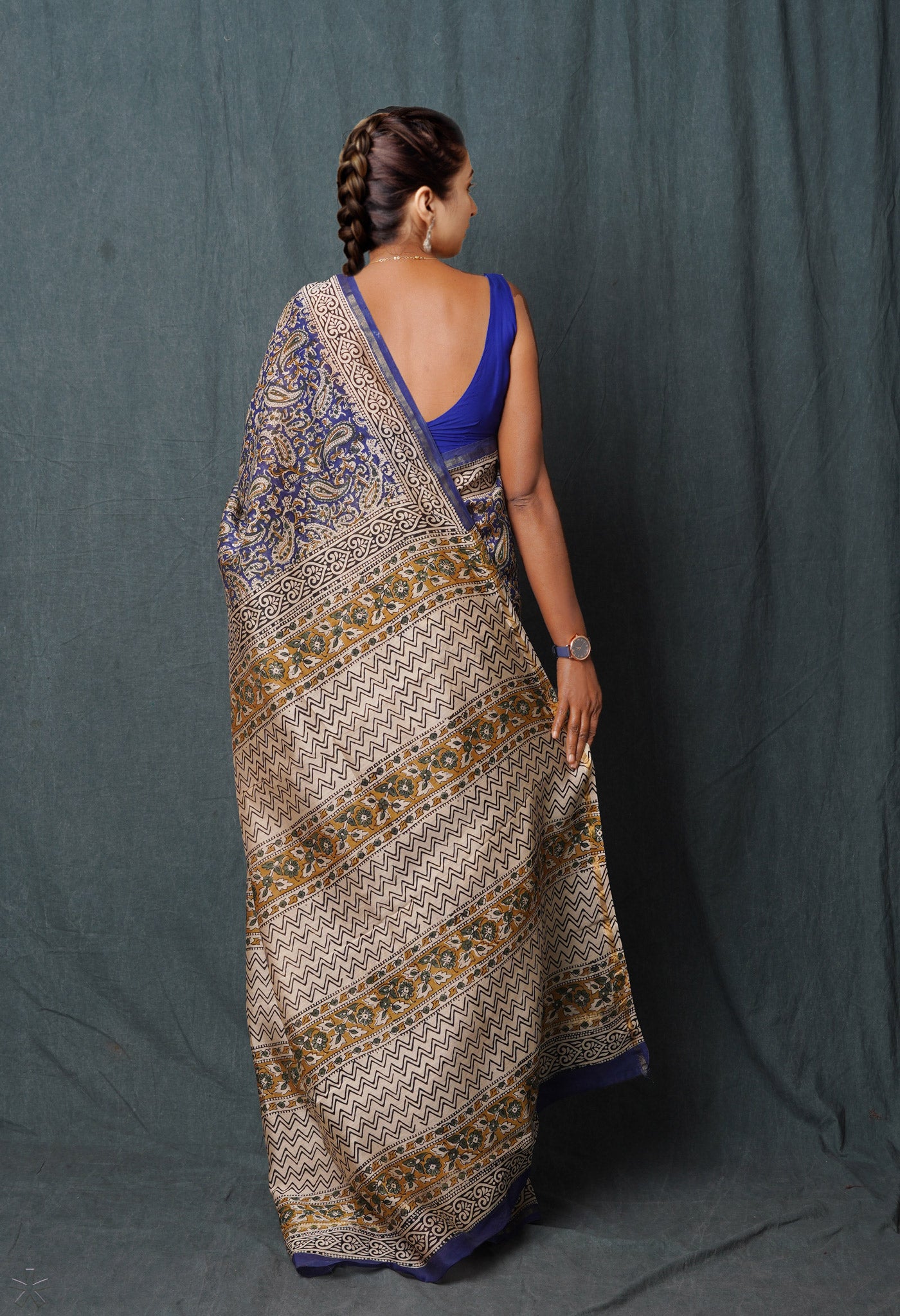WEAVER'S WORLD / MAHESHWAR / TEXTILES -3
WEAVER'S WORLD / MAHESHWAR / TEXTILES -3
After dyeing, the yarn is normally received by the weavers in the form of bundles. Both in the case of warp and weft, the threads need to be freed from tangles and stretched again in order to make them tighter.
The warp machine or Taana in Hindi is made up of a big octagonal vertical cylinder that rotates on its axis and a vertical rack on which a number of thread rolls are placed. The rolls pass to the cylinder portion through hooks under a constantly moving frame that helps the cylinder wind in a criss-cross manner that facilitates the detection of any breach in the fibre, in case it exists. The process starts from one end of the cylinder and goes on and on till the whole of the cylinder is covered with thread. Using this machine, the master weaver converts the raw silk into single fibre or double fibre warp, depending upon the requirement of the loom. Once this has been achieved, the taana threads in the form of bundles are taken to the loom where they are used as warp.
A charka or wheel (operated by hand earlier but is now motorized) prepares the big rolls of fabric yarn for the warp, thinner smaller ones for the weft called bobbins that are placed inside the shuttle of the loom arrangement. Making the warp being a calculative and careful task since the silk fibre is very delicate, the master weaver himself undertakes to do it or personally supervises.


Once the warp and weft are prepared the process of weaving can take place. One end of the warp is bound on the bound on the main beam of the loom. The other end (in the form of a bundle) is taken under another horizontal beam parallel to the main one and then across the overhead beam. Weights are hung on it at the other end of the beam to keep it tight, giving the warp a Z shape. There are upto 4000 strings on a single warp. The length of the warp is 50 metres while the width would be 48 inches. the bundles need to be opened up since the weft threads would be moving across the length of the waft and in between the warp threads, by the motion of the pedal. The zari threads and other color threads make it across the warp depending upon the design. The motion of the loom provides movement to the overhead jacquard-like punch card mechanism called dobby (that is smaller than that of the jacquard looms but have a similar function of putting forward particular hooks that are required for a particular border design) that helps in the design of the border of a saree.


Finishing – Once the weaving of the saree is complete, the length generally being about 11 feet, it is removed from the frame, carefully folded and packed.
Maheshwari handloom products are sarees, salwar suits, dupattas, shirts and home furnishings like curtains, cushion covers.

SHOP ONLINE

